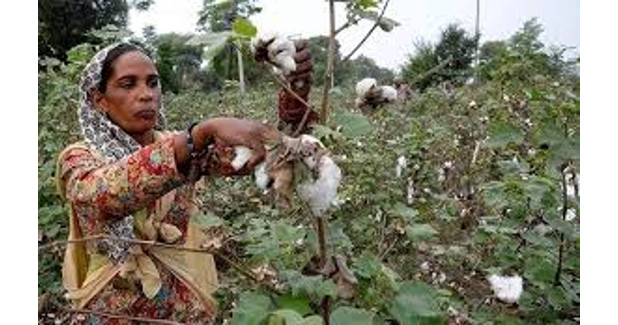
Cotton as superior oil absorbent
Raw and finer cotton in loose form comes out as best oil absorbent. A collaborative research involving high school students from Lubbock, scientists from Texas Tech University and U. S. Department of Agriculture’s Laboratory in New Orleans has shown that micronaire
Raw and finer cotton in loose form comes out as best oil absorbent. A collaborative research involving high school students from Lubbock, scientists from Texas Tech University and U. S. Department of Agriculture’s Laboratory in New Orleans has shown that micronaire, which is an indicator of maturity and fineness of cotton plays a significant role in determining cotton’s oil absorption properties.
The experiments carried out at the Nonwovens and Advanced Materials Laboratory at Texas Tech University (TTU) has shown that raw cotton, which is finer and in loose form absorbs more oil than coarser cotton. This trend was evident in structured fabrics such as needlepunched and hydroentangled nonwoven fabrics, showing that finer cotton exhibited higher sorption values.
The results were published in the March/April 2017 issue of AATCC Journal of Research, published by the American Association of Textile Chemists and Colorists (AATCC). In addition to the useful result, the research displayed one of the interesting collaborations. The team involved very senior and junior scientists.
Two high school students from Lubbock, Luke Kitten and Ronald Kendall, Jr., conducted experiments in TTU’s Nonwovens Laboratory, which was supervised by a graduate student Vinitkumar Singh. Vinitkumar graduated PhD, from TTU and is currently employed as a Product Development Engineer at Sontara, a spunlace nonwovens manufacturer in Old Hickory, Tennessee.
The research also involved Dr. Paul Sawhney, who will be turning eighty in a few months, just retired last May from USDA after about 5o years of active research in the textiles field in the United States. The work has highlighted the importance of multidisciplinary research team involving next generation scientists and industry veterans.
The goal of the research at TTU’s Nonwovens Laboratory is to enable cotton to be a high performance fiber. United States’ upland cotton growers supported the work, through their Texas State Support Program. Lubbock-based Plains Cotton Growers, Inc. has been an active supporter of the work at TTU’s Nonwovens and Advanced Materials laboratory.
By: Seshadri Ramkumar, Texas Tech University, USA
CATEGORIES Industry Update



